13 Fun Facts Every Pyrex Collector Should Know
There is more to Pyrex than mixing bowls and casseroles. The history behind each piece is filled with interesting details. Whether you are new to collecting or have shelves full of glassware, there is always something to learn. Take a moment to explore these facts that connect the past to the present. You might spot something familiar next time you visit a thrift store.
This post may contain affiliate links, which helps keep this content free. Please read our disclosure for more info.
Pyrex Was Originally Created for Railroad Lanterns

Pyrex was not made for baking at first. It began as a heat-resistant glass for railroad lanterns around 1915. Corning Glass Works developed the material to withstand thermal shock. The durability of this glass led to its use in kitchenware.
Later on, Corning saw an opportunity to bring the same glass into homes. Housewives appreciated how it could go from oven to table without breaking. Its success changed American kitchens forever. That shift in use is what helped launch Pyrex into the spotlight.
The First Pyrex Dish Was a Pie Plate
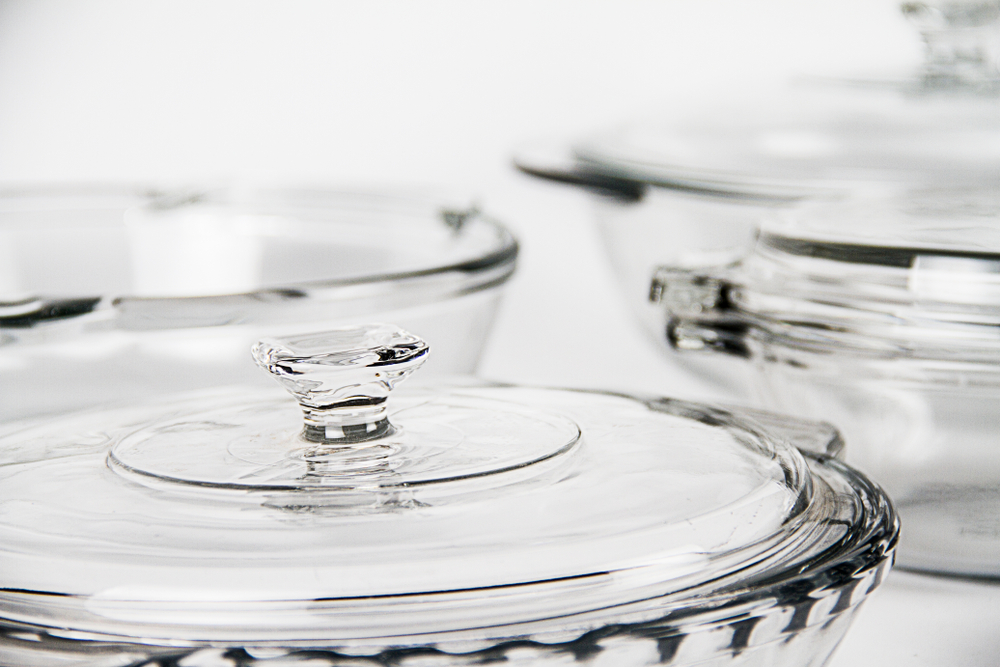
The earliest kitchen item sold under the Pyrex name was a clear pie plate. It was introduced in 1915 and quickly gained attention. The plate held up under high heat and showed the baking process through the glass. Home cooks loved the practicality and modern look.
This pie plate helped set the tone for what would follow. Pyrex became known for useful shapes with reliable performance. The clear design was different from heavy metal pans. Many collectors try to find this original model today.
Pyrex Colors Were Added Years Later
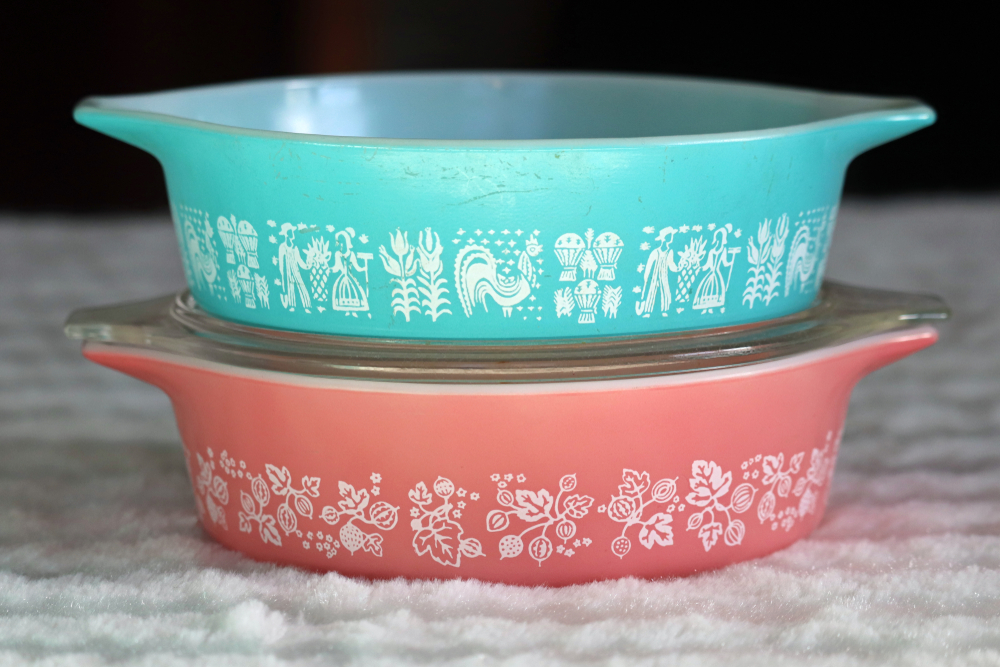
The earliest Pyrex dishes were clear, not colored. It was not until the 1940s that the colorful opalware versions hit the shelves. The release of colored mixing bowls made Pyrex more appealing as a decorative item. Popular sets included vibrant hues like red, green, and yellow.
These colors helped define Pyrex during the postwar boom. Households wanted bright, cheerful kitchens. The colorful sets matched the mood of the era. Today, certain colors are more sought after than others based on age and rarity.
Many Designs Were Made for Promotions
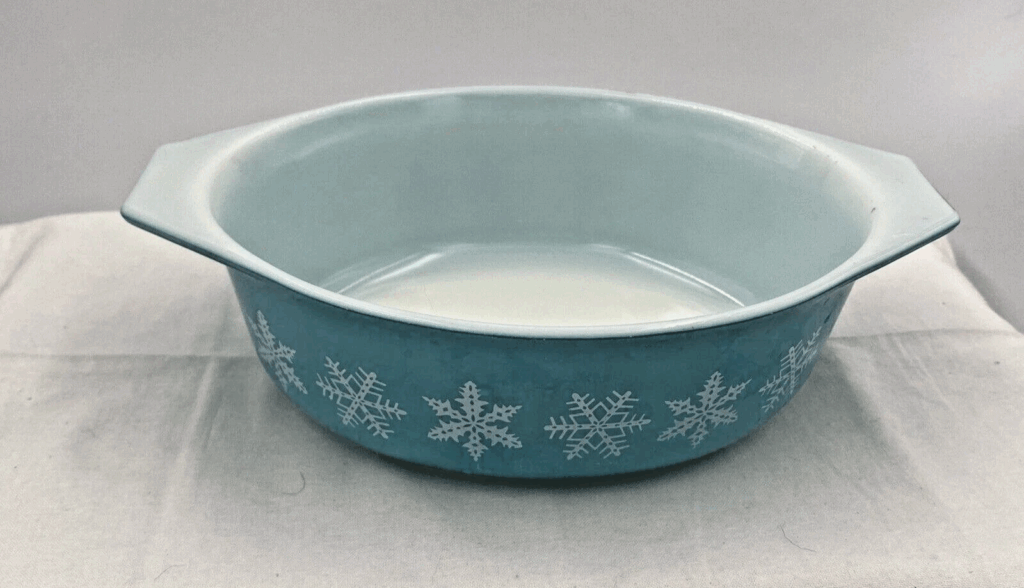
Some Pyrex patterns were not sold in stores. They were made only for promotional offers or giveaways. For example, some grocery stores offered Pyrex in exchange for proof of purchase. These limited releases are now rare collector items.
Patterns like “Gold Acorn” and “Snowflake Blue” sometimes appeared as exclusives. Shoppers could find them bundled with appliances or food products. Since they were not always labeled clearly, they can be tricky to identify. Collectors often rely on pattern guides to confirm these pieces.
The Iconic Gooseberry Pattern Came in Several Colors
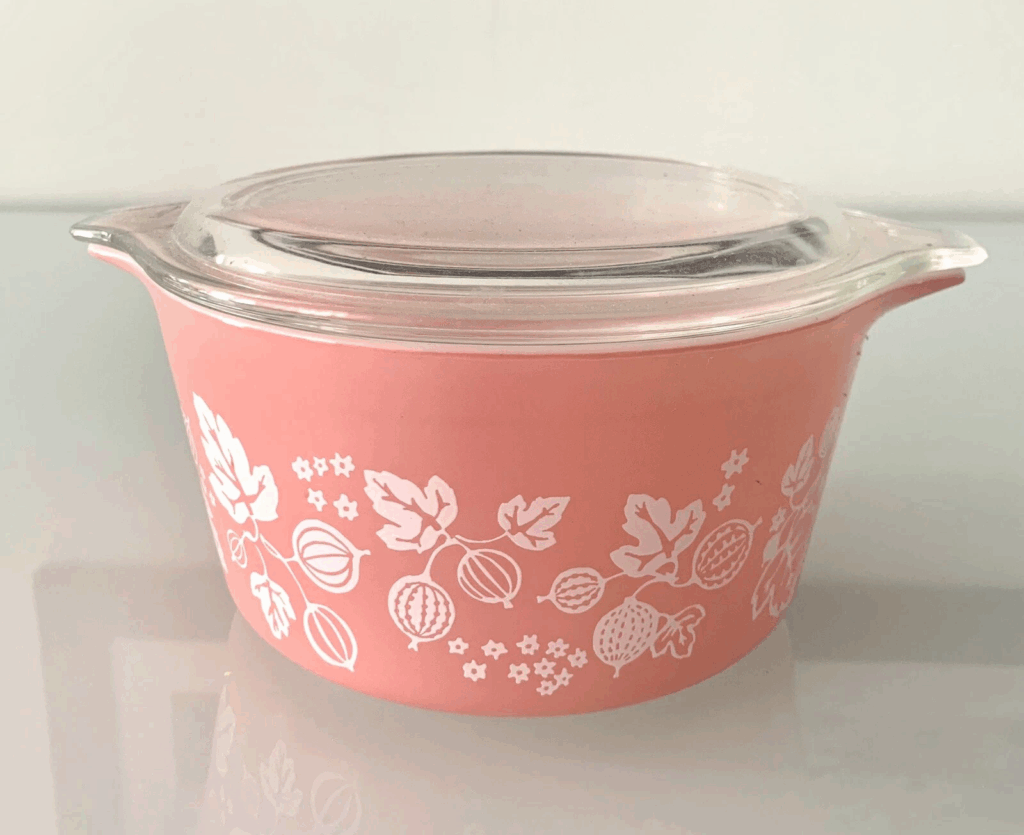
The Gooseberry pattern is one of the most recognized in the Pyrex world. It was part of the popular Cinderella bowl set launched in the late 1950s. The pattern came in combinations like pink on white and white on black. Some colors were only available in certain markets.
For example, yellow Gooseberry was released in Canada but not in the United States. That has made it more valuable to collectors. The pink version remains a favorite because of its soft look. Gooseberry bowls remain highly prized across collector circles.
Cinderella Bowls Were Named After a Disney Movie
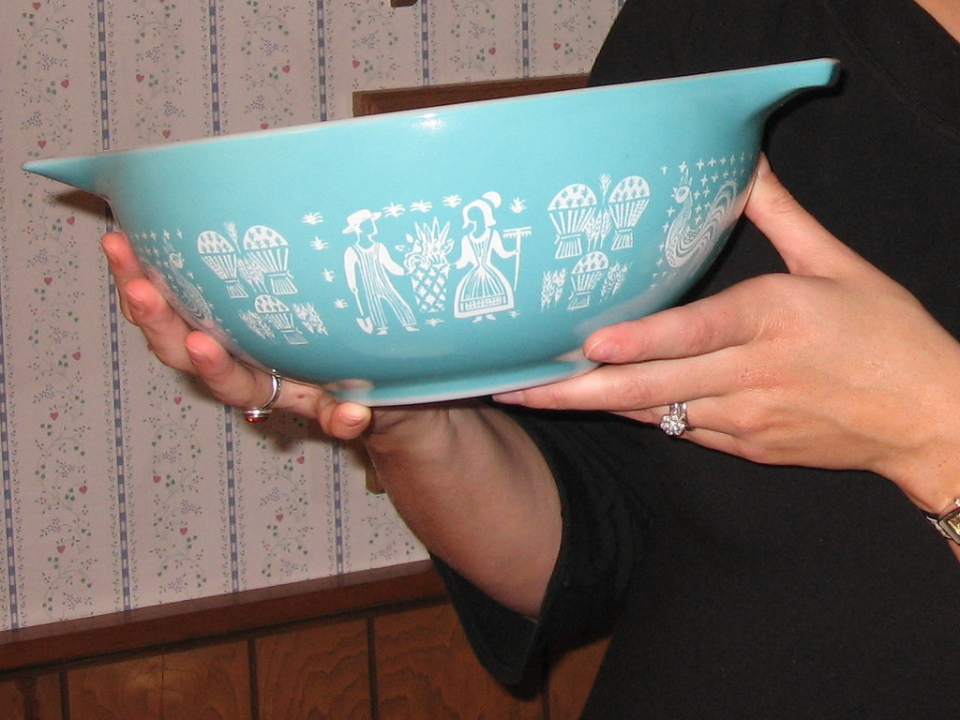
The rounded mixing bowls with extended handles are known as Cinderella bowls. They were introduced in the mid-1950s during the popularity of Disney’s Cinderella. The name was part of a clever marketing effort. The handles made pouring and mixing easier.
Collectors enjoy finding full Cinderella sets in good condition. These bowls often come in sets of four with nesting sizes. The handle-and-spout design set them apart from earlier Pyrex bowls. Each set carries charm and function in equal measure.
Opal Pyrex Is Made from a Different Type of Glass
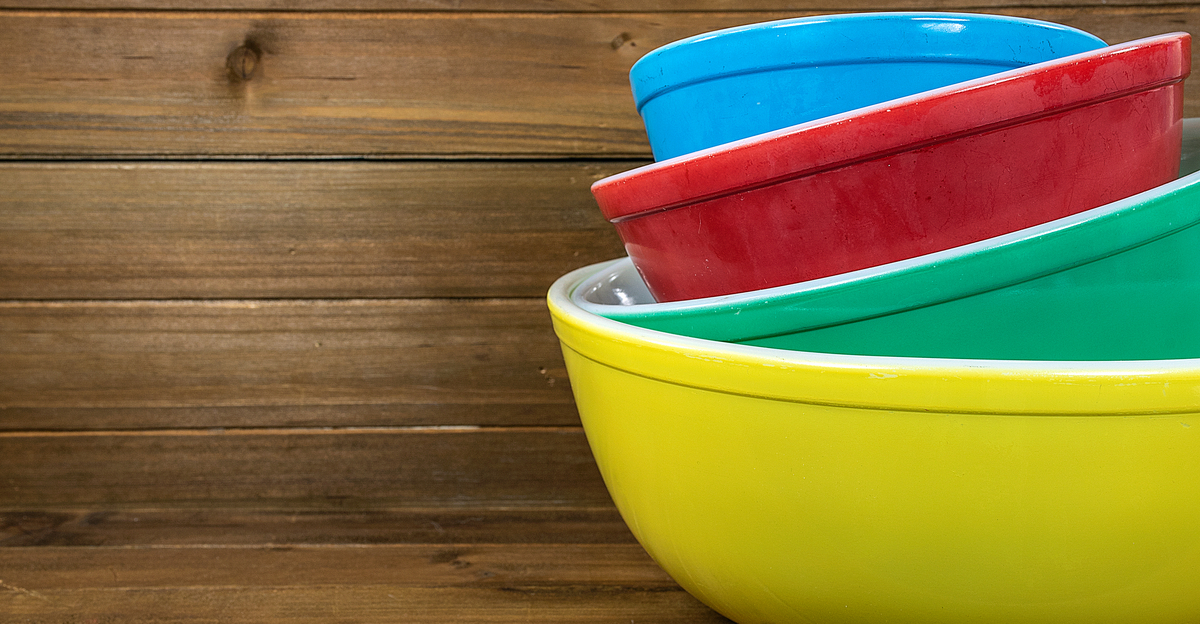
Early Pyrex dishes were made with borosilicate glass. Later, in the 1940s, opal Pyrex was introduced using soda-lime glass. This version allowed for the opaque and colorful designs collectors now love. Soda-lime glass was easier and cheaper to produce in bulk.
Some purists prefer the strength of borosilicate, but both types are collectible. Knowing which type you have can help you understand its era. The change in formula came with the rise of mass production. Both styles carry their own value and history.
Some Pyrex Patterns Were Only Sold in Specific Countries

Not all Pyrex designs were available everywhere. Corning produced exclusive lines for different regions. For instance, the “Maple Leaf” pattern was only sold in Canada. Meanwhile, other designs were limited to the UK or Australia.
These regional exclusives make collecting more challenging and interesting. They create opportunities to find rare imports or cross-border pieces. Some designs were never featured in catalogs. This adds mystery and value for long-time collectors.
The Primary Colors Set Is a Collector Favorite
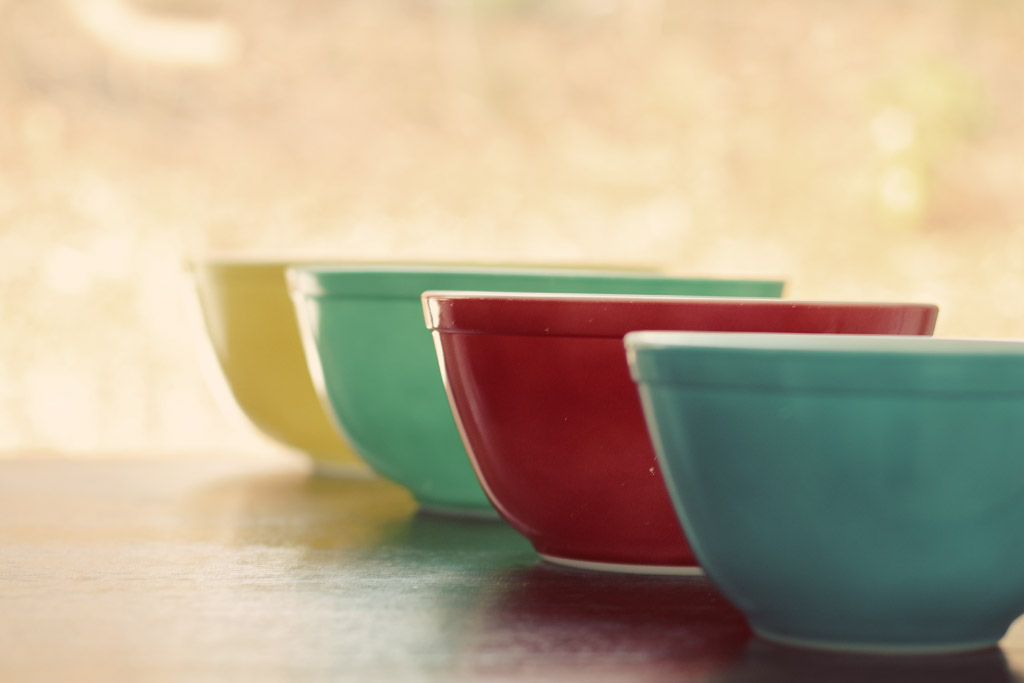
One of the most popular Pyrex sets is the Primary Colors Mixing Bowl Set. It features four bowls in red, blue, green, and yellow. This set first appeared in the 1940s and stayed popular for decades. Many homes kept them for everyday use.
Because they were so common, finding one in great condition is harder today. Scratches and fading are typical signs of heavy use. A near-perfect set with bright colors is always in demand. Collectors often look for original markings and matching sizes.
Some Pyrex Pieces Were Made for Hospitals
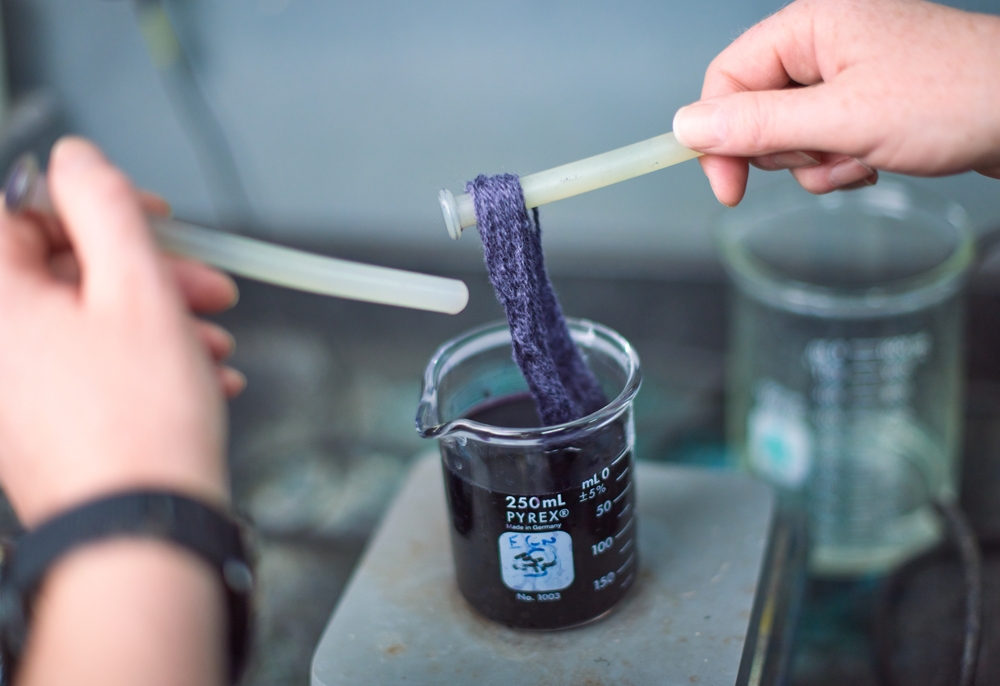
Pyrex was not just for home kitchens. Corning also created lines of Pyrex for medical and laboratory use. These pieces were made to handle chemical exposure and sterilization. Flasks, tubes, and other lab gear were produced under the same name.
Collectors sometimes come across these items at estate sales or auctions. They are often thicker and marked with scientific labels. Though not as colorful, they reflect another side of Pyrex history. These pieces remind people of the brand’s original industrial purpose.
Pyrex Patterns Can Fade in the Dishwasher
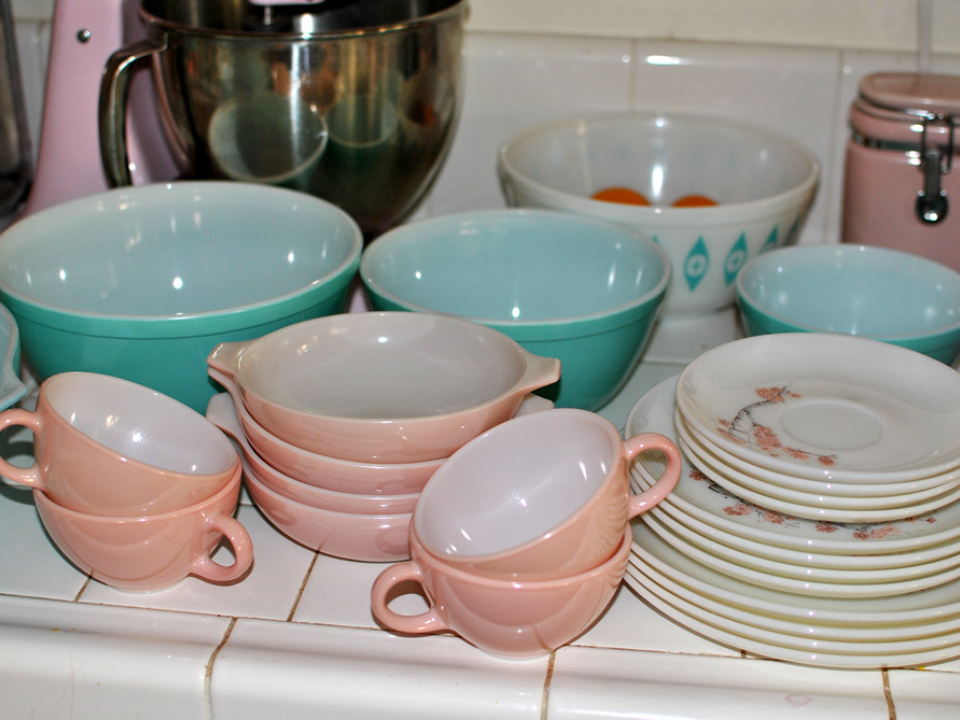
Many collectors learn the hard way that dishwashers are not safe for vintage Pyrex. The strong water jets and detergent can wear down painted surfaces. Over time, the color and pattern may fade or peel. This damage cannot be reversed once it occurs.
Hand-washing is the best method for preserving value. It helps maintain the pattern clarity and prevents surface scratches. Collectors always recommend using gentle soap and a soft cloth. Taking care of each piece can extend its life for decades.
Some Rare Pyrex Can Sell for Thousands
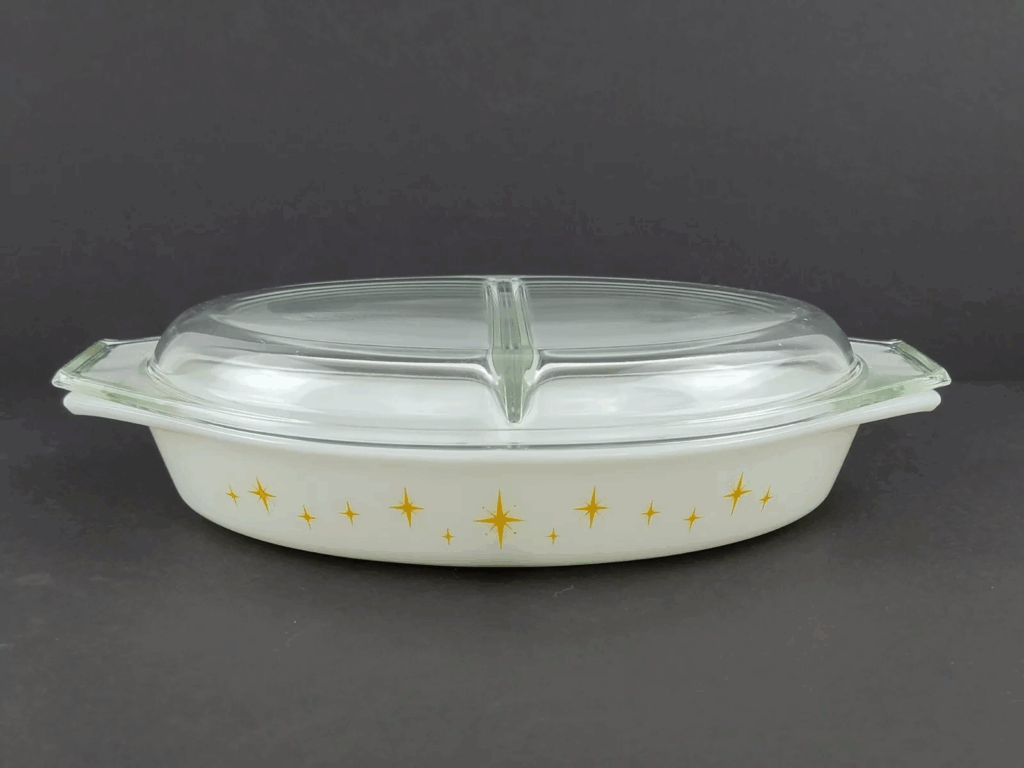
While many pieces are affordable, others reach high prices at auctions. Rare patterns like “Lucky in Love” and “Atomic Eyes” are known to bring in serious bids. Their limited release and visual appeal add to their value. Only a few examples are known to exist.
Collectors who find these pieces often hold onto them or insure them. They are rarely used for everyday cooking. Instead, they are displayed or stored with care. Prices reflect both rarity and collector interest.
Pyrex Reissues Look Similar but Are Not the Same
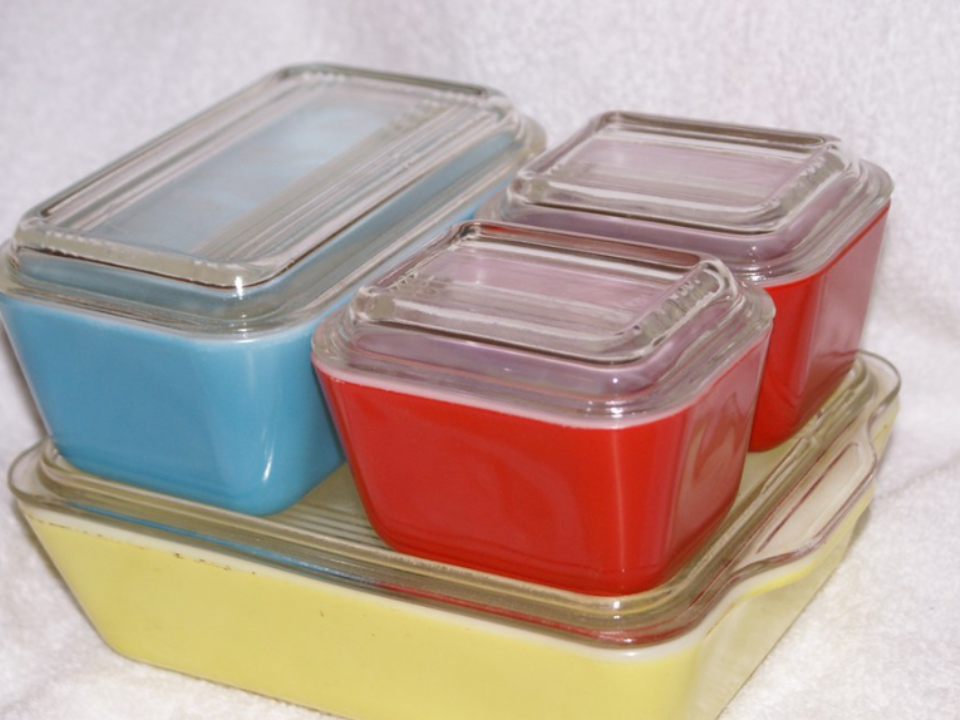
Modern Pyrex has released several reissues of older patterns. While they resemble vintage designs, they use different materials. Newer Pyrex is often made with tempered soda-lime glass and different printing methods. These changes affect both feel and durability.
Collectors usually check for differences in weight, shine, and markings. Reissues are fun for casual fans, but they do not carry the same value. They are often sold in large retailers and are clearly labeled. Knowing the difference helps prevent confusion in the market.
This article originally appeared on Avocadu.
